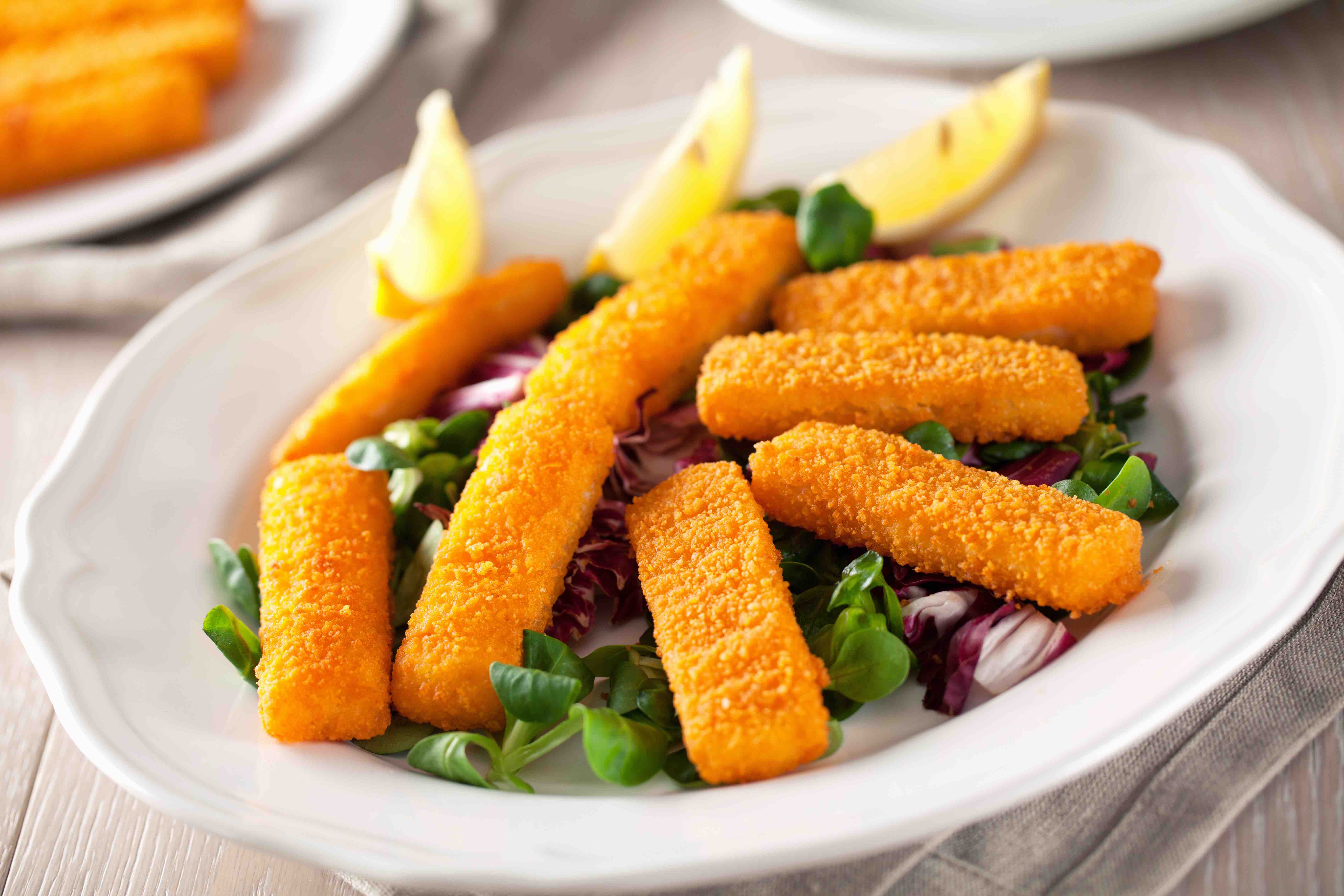
Fish sticks are a popular and convenient seafood option enjoyed by people of all ages. Whether served as a quick meal or a delicious snack, fish sticks offer a tasty way to incorporate fish into your diet. In this article, we will explore 15 nutrition facts about fish sticks, shedding light on their health benefits, key nutrients, and their role in a balanced diet. Join us as we dive into the depths of fish stick nutrition and discover why they can be a nutritious addition to your culinary repertoire.
A Source of Lean Protein
Fish sticks are a good source of lean protein, which is essential for building and repairing tissues, supporting immune function, and maintaining overall health. They can be an excellent protein option, especially for individuals who prefer seafood over other meats.
Omega-3 Fatty Acids
Fish sticks, particularly those made from fatty fish like salmon or cod, can provide a significant amount of omega-3 fatty acids. These essential fats are known for their potential benefits in promoting heart health, reducing inflammation, and supporting brain function.
Rich in Essential Vitamins
Fish sticks contain essential vitamins that contribute to overall health. They are a good source of vitamin D, which plays a crucial role in bone health and immune function. Additionally, they provide vitamins B6 and B12, which are important for energy production and neurological health.
Minerals for Optimal Functioning
Fish sticks are also a source of minerals that support various bodily functions. They contain phosphorus, which is vital for strong bones and teeth, as well as selenium, a powerful antioxidant that helps protect cells from damage and supports thyroid function.
Low in Calories
Compared to many other fried food options, fish sticks are relatively low in calories. This can make them a satisfying choice for those watching their calorie intake or trying to maintain a healthy weight.
Considerations for Sodium Content
One aspect to be mindful of when consuming fish sticks is their sodium content. The sodium levels can vary depending on the brand and preparation method. It’s important to check the nutrition label and opt for low-sodium varieties when possible, especially for individuals with certain health conditions.
Versatile Cooking Options
Fish sticks offer versatility in cooking methods. While they are commonly baked or fried, you can also experiment with grilling or air frying for a healthier twist. These alternative cooking methods can help reduce the amount of added fats and calories.
Potential Allergens
It’s important to note that fish sticks contain allergens, particularly fish and wheat. Individuals with allergies or sensitivities to these ingredients should check the ingredient list and seek alternatives if necessary. Some brands offer gluten-free options made with alternative flour.
A Fun Way to Introduce Fish to Children
Fish sticks can be a kid-friendly option to introduce fish into children’s diets. The crispy coating and familiar shape make them appealing to younger palates. This can be an excellent opportunity to encourage the consumption of omega-3-rich fish in a form that children may find more approachable.
The Importance of Portion Size
As with any food, portion control is important when consuming fish sticks. Pay attention to the recommended serving size on the packaging and adjust your portions accordingly to maintain a balanced diet.
Pairing with Nutritious Sides

To enhance the nutritional value of your meal, pair fish sticks with nutritious side dishes. Consider serving them with a side of steamed vegetables, whole grains, or a fresh salad to create a well-rounded and satisfying meal.
Mindful Ingredient Choices
When purchasing fish sticks, pay attention to the ingredients used. Opt for brands that use high-quality fish and minimal additives. Reading the ingredient list can help you make informed choices and select fish sticks that align with your dietary preferences and values.
Cooking Safety and Proper Storage
To ensure food safety, it’s essential to follow proper cooking and storage guidelines for fish sticks. Thoroughly cook them according to the instructions on the packaging to eliminate any potential pathogens. Additionally, store any leftovers promptly in the refrigerator and consume them within the recommended timeframe.
Sustainability Considerations
When purchasing fish sticks, it’s worth considering the sustainability of the fish used. Look for products that are sourced from well-managed fisheries or carry certifications from reputable sustainability organizations. Choosing sustainably sourced fish helps protect marine ecosystems and supports responsible fishing practices.
Exploring Flavor Variations
Fish sticks come in a variety of flavors and coatings, offering options to suit different taste preferences. From classic breaded varieties to ones infused with herbs and spices, there are choices available to cater to a range of palates.
Conclusion
With these 15 insightful facts about fish sticks, you now have a better understanding of their nutritional value, health benefits, and considerations. When enjoyed as part of a balanced diet, fish sticks can be a delicious and convenient way to incorporate fish into your meals. Remember to make mindful choices, practice proper cooking and storage methods, and savor the crispy goodness of these seafood delights.
Frequently Asked Questions (FAQs)
Are fish sticks a healthy food option?
Fish sticks can be a healthy food option when consumed as part of a balanced diet. They provide lean protein, omega-3 fatty acids, and essential nutrients. However, it’s important to consider factors such as cooking methods, portion sizes, and ingredient choices to maximize their nutritional value.
Can fish sticks be part of a weight-loss diet?
Fish sticks can be incorporated into a weight-loss diet when consumed in moderation and as part of a well-balanced meal plan. It’s important to consider the overall calorie intake and choose cooking methods that minimize added fats and calories.
Can I make homemade fish sticks?
Yes, you can make homemade fish sticks using fresh fish fillets and a breading of your choice. This allows you to have more control over the ingredients used and the cooking method. Look for healthy recipes online or in cookbooks to create your own delicious and nutritious fish sticks.
Can fish sticks be a good source of protein for vegetarians or vegans?
Fish sticks are derived from fish and are not suitable for vegetarians or vegans. However, there are plant-based alternatives available in the market that mimic the texture and flavor of fish sticks, offering a protein source for individuals following vegetarian or vegan diets.
Are fish sticks safe for individuals with seafood allergies?
Fish sticks are not safe for individuals with seafood allergies, as they are made from fish. It’s important for individuals with seafood allergies to avoid fish sticks and any other products that contain fish or fish-derived ingredients.
Was this page helpful?
Our commitment to delivering trustworthy and engaging content is at the heart of what we do. Each fact on our site is contributed by real users like you, bringing a wealth of diverse insights and information. To ensure the highest standards of accuracy and reliability, our dedicated editors meticulously review each submission. This process guarantees that the facts we share are not only fascinating but also credible. Trust in our commitment to quality and authenticity as you explore and learn with us.
